Chiclid Tank Setup: A Guide to African Cichlid Aquariums
Explore the world of African cichlid aquariums with our comprehensive guide to chiclid tank setup! Discover the essentials of creating a thriving habitat for these vibrant fish. Learn about tank size, water parameters, substrate, decorations, and tank mates suitable for African cichlids.
With our expert advice, you’ll be well-equipped to set up a stunning and successful chiclid aquarium, whether you’re a beginner or an experienced hobbyist.
Key Takeaways
- Choose a larger tank for African Cichlids to reduce aggression.
- Use sand, crushed coral, or gravel substrate for their tank.
- Stock diverse species based on compatibility and tank size.
- Maintain water quality with regular testing and balanced feeding.
- Design tank with hiding spots and territories for their territorial nature.
Understanding African Cichlids: The Perfect Tank Mates
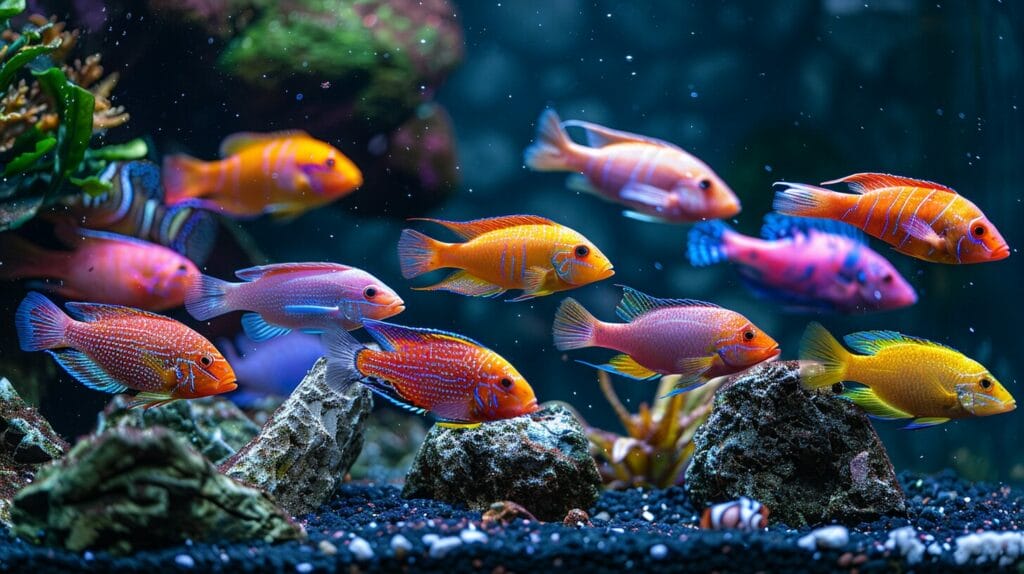
Why are African Cichlids perfect tank mates for aquarium enthusiasts? Cichlids are a diverse group of fish known for their vibrant colors, unique personalities, and fascinating behaviors making them a popular fish among aquarists. But understanding their traits is essential. These cichlids fall into aggressive and less aggressive species, adding a dynamic element to the aquarium.
African Cichlids are very territorial, especially during breeding periods. Providing ample hiding places and adding plants in the tank can help alleviate aggression among American cichlids and give the fish a sense of security. Some species of African Cichlids are herbivores, so including vegetation in the tank caters to their dietary needs and creates a more natural environment.
Choosing the Right African Cichlid Tank: Size and Design
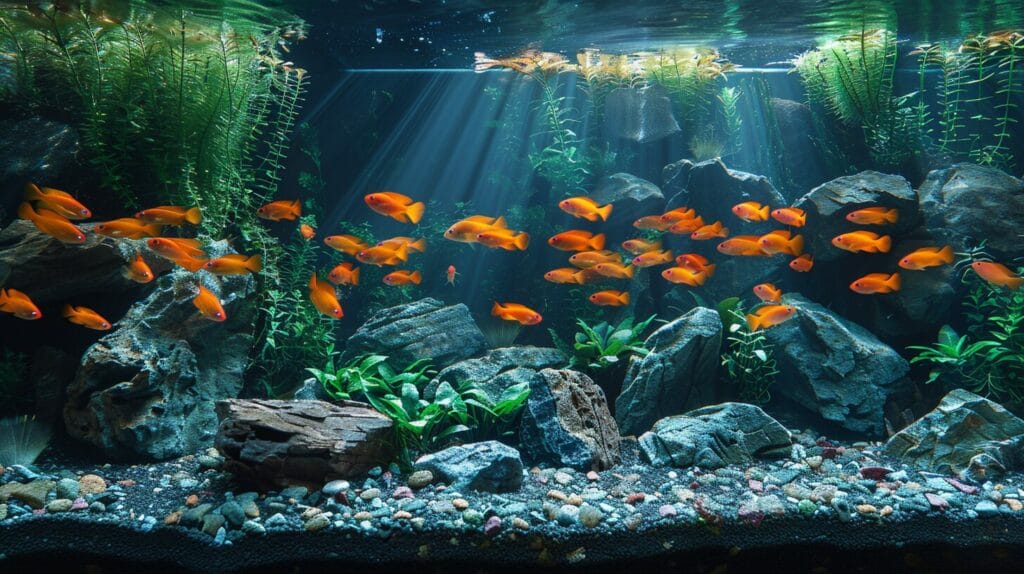
When establishing an African Cichlid aquarium, consider the tank size and design to ensure the well-being of these colorful fish. Opt for a larger tank— at least 55 gallons for a small community. Larger tanks are recommended to provide ample space for these active swimmers, helping reduce aggression by offering more territories and diluting the impact of any aggressive behavior.
Design the tank layout with multiple hiding spots and territories using rocks, caves, and plants. This setup reduces aggression by providing places for cichlids to establish their territories and escape aggression. Incorporating different levels in the tank layout with varying heights of rocks or structures accommodates the swimming habits of different cichlid species, including those that prefer open water and those that thrive near the substrate.
Types of Substrate for Your Cichlid Tank
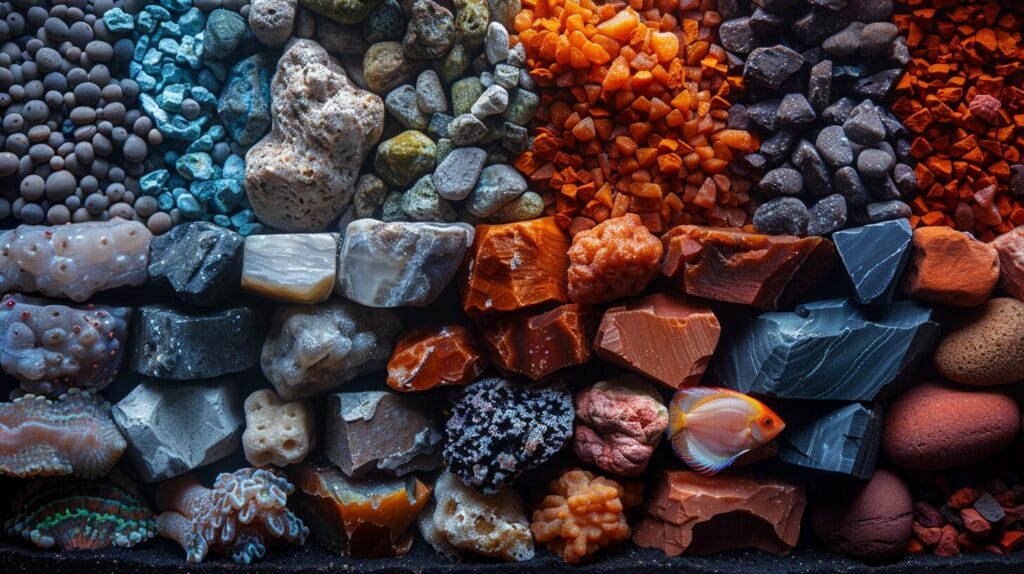
Selecting the appropriate substrate for your African Cichlid tank is crucial for mimicking their natural habitat and enhancing their overall well-being. Consider the following types of substrate:
- Sand: African Cichlids often sift through sand in the wild, making it a popular choice for their aquariums.
- Crushed Coral: This substrate helps maintain a higher pH level, beneficial for many African Cichlid species.
- Gravel: Gravel is versatile, allowing for good water flow and providing a surface for beneficial bacteria to grow.
Perform regular maintenance tasks such as vacuuming the substrate during water changes, avoiding overfeeding to prevent excess waste buildup, and monitoring water parameters to address any issues promptly.
Stocking Your African Cichlid Tank: Choosing the Right Types of African Cichlids
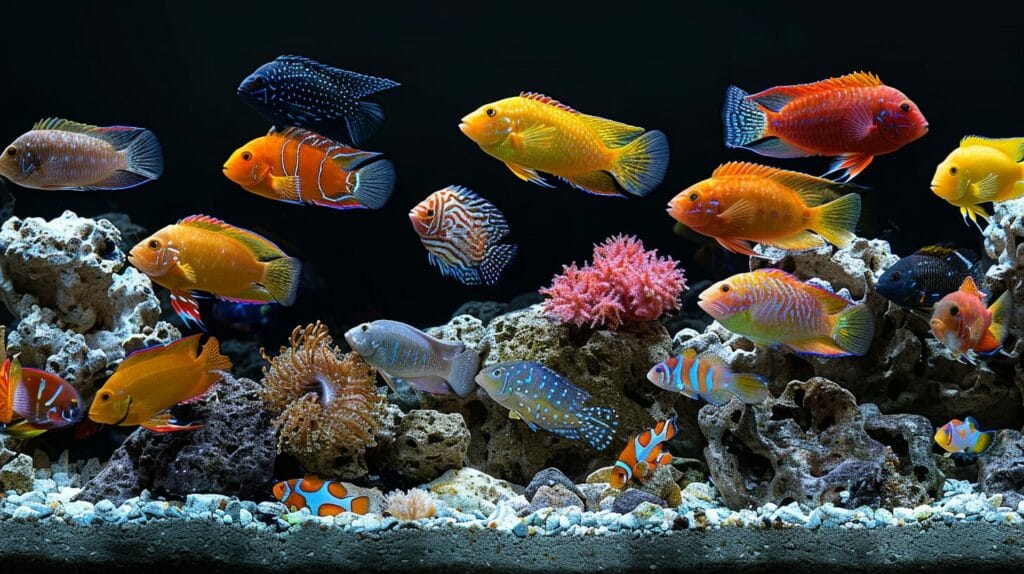
For a vibrant and diverse aquarium experience, stock your African Cichlid tank with a variety of species. Consider the size of your tank and the compatibility of the species you choose to guarantee a harmonious environment. Research the specific requirements and behaviors of each type to make informed decisions when stocking your African Cichlid tank.
Can the Setup for African Cichlid Aquariums Help in Eliminating Reef Tank Dinoflagellates?
Setting up African Cichlid aquariums may not directly eliminate reef tank dinoflagellates, but the understanding of reef tank dinoflagellates can help in creating a balanced ecosystem for the African Cichlids. Proper tank maintenance and water parameters can contribute to a stable environment and minimize the growth of dinoflagellates.
Maintaining Water Quality in Your Cichlid Tank
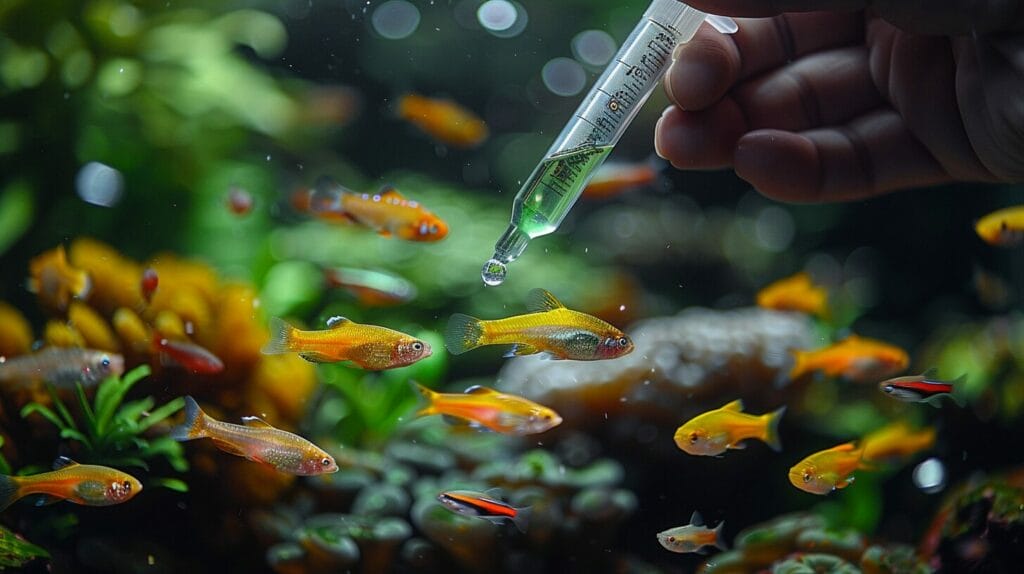
To maintain a healthy environment for your African Cichlids, preserving excellent water quality in your tank is crucial. When it comes to water quality in your cichlid tank, there are key aspects to ponder:
- Regular Testing Methods: Utilize reliable testing kits to monitor essential parameters like pH, ammonia, nitrites, and nitrates. Consistent testing helps you stay proactive in maintaining ideal water conditions.
- Common Issues: Keep an eye out for signs of poor water quality such as cloudy water, algae blooms, or stressed fish. Addressing these issues promptly can prevent further complications.
- Troubleshooting: If you encounter water quality problems, perform partial water changes, ensure adequate filtration, and avoid overfeeding. These simple steps can often rectify common water quality issues and help restore a healthy balance in your cichlid tank.
How to Care for Green Terror Cichlids in an African Cichlid Tank Setup?
When setting up an African cichlid tank, it’s important to consider the specific needs of the Green Terror Cichlid. Providing ample space, a varied diet, and appropriate water parameters are essential for their well-being. Follow these green terror cichlid care tips to ensure a thriving aquarium environment.
Conclusion
To summarize, establishing an African cichlid tank necessitates thoughtful deliberation of:
- Tank companions
- Tank dimensions and layout
- Substrate variety
- Cichlid varieties
- Water quality upkeep
By adhering to these steps, you can construct a dynamic and flourishing aquarium for your African cichlids to relish.
Remember to investigate and comprehend the specific requirements of your cichlids, including suitable heaters and pellet diets, to guarantee a successful setup and contented fish.
Frequently Asked Questions
What is the importance of substrate in African Cichlid tank setup?
Substrate is crucial in providing a natural environment for African Cichlids. It helps in maintaining water quality and supports the growth of beneficial bacteria, crucial for both saltwater and freshwater fish environments.
What are the different types of African Cichlids?
There are various types of African Cichlids including peacock cichlids, mbunas, hap, frontosa, and malawi cichlids, among others.
How should I stock African Cichlids in my aquarium?
It is essential to research the specific requirements of each species and consider their compatibility before stocking African Cichlids to avoid aggression and territorial disputes.
Can African Cichlids be kept with other types of fish?
African Cichlids are known to be aggressive and territorial, therefore it is recommended to keep them with fish that can withstand their behavior, such as other cichlids or similarly sized species.
Do African Cichlids require live plants in their aquarium?
While some African Cichlids may uproot live plants, there are species from Lake Tanganyika that can coexist peacefully with plants. It is important to choose suitable plant species and secure them properly.







